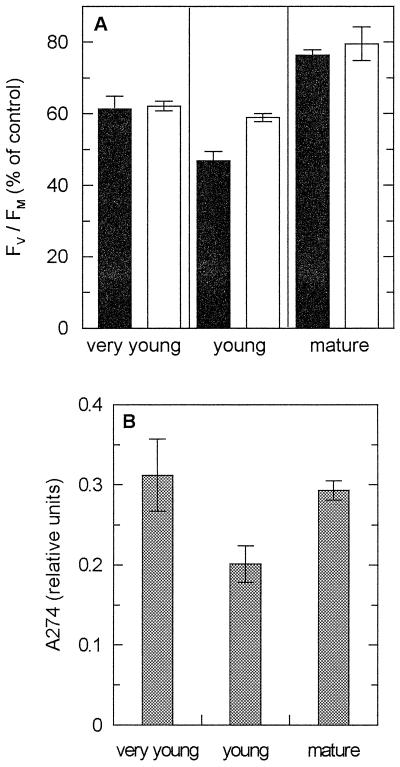Figure 8.
Effects of ambient UV-B radiation on potential efficiency of PSII (Fv/Fm) during direct sun exposure (A), and content of vacuolar UV-absorbing substances (B) of sun leaves of M. indica. A, Leaves in three developmental stages (very young, young, and mature) were exposed to a PAR dose of about 4.2 mol m−2 (45 min). Fv/Fm determined subsequent to sun exposure in the presence (black bars, Aclar) and absence (white bars, Mylar) of UV-B is given as percent of controls. Data are means ± se of three measurements made at different leaf regions. Control values of Fv/Fm (leaves before sun exposure; n = 6) were: 0.72 ± 0.01 (very young), 0.67 ± 0.04 (young), and 0.79 ± 0.01 (mature leaves). A representative experiment is depicted. B, Relative content of UV-absorbing substances in the three developmental stages of M. indica sun leaves (absorbance measured at λmax in the UV region, 274 nm). Data are means ± se (n = 6). Note that the leaf extracts were 10 times more dilute than for shade-grown V. surinamensis leaves (compare with Fig. 5B).

